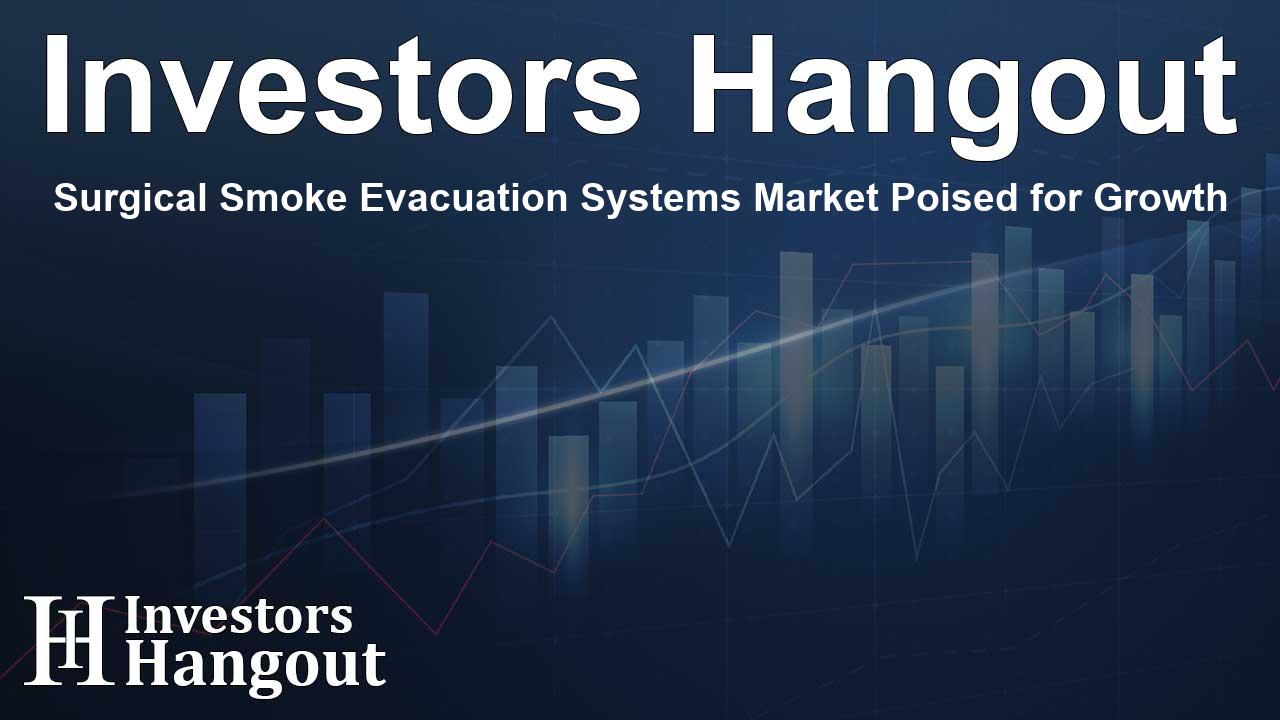Surgical Smoke Evacuation Systems Market Poised for Growth

Overview of the Surgical Smoke Evacuation Systems Market
The surgical smoke evacuation systems market is on the verge of significant growth, projected to expand by USD 46.4 million from 2024 to 2028. This growth will occur at a compound annual growth rate (CAGR) of about 5.1%. The increasing awareness of health hazards associated with surgical smoke is a key driver for this trend, along with the evolving demand for advanced interconnected medical devices.
Impact of Health Hazards Awareness
As healthcare practitioners continue to prioritize patient safety, the attention toward the dangers posed by surgical smoke becomes more pronounced. Surgical smoke, produced during surgical procedures like electrosurgery, contains harmful chemicals and potential carcinogens that can affect both medical staff and patients. Consequently, hospitals and surgical centers are increasingly investing in efficient smoke evacuation systems as a protective measure.
Technological Innovations in the Market
Technological advancements play a pivotal role in the evolution of surgical smoke evacuation systems. The integration of these systems with other medical devices enhances the overall surgical experience for both patients and healthcare professionals. For instance, modern systems can now link with surgical lasers and electrocautery devices, creating a more streamlined and controlled surgical environment.
Minimally Invasive Surgeries and Their Role
The rising popularity of minimally invasive surgeries is further fueling the demand for smoke evacuation systems. Procedures such as laparoscopic surgeries lead to substantial amounts of smoke generation, and as the volume of surgeries rises globally, so does the need for effective smoke removal technologies. This has led to increased innovation in the types of products offered in the market, including advanced smoke evacuation filters and tubing.
Market Challenges and Technical Limitations
Despite the promising growth trends, the surgical smoke evacuation systems market faces its challenges. Technical limitations remain a significant hurdle, with many current systems unable to completely eliminate surgical smoke. For instance, during extensive procedures, smoke production can overwhelm the evacuation system, leading to exposure risks for surgical teams.
Dealing with Noise Levels
Additionally, the operational noise created by some smoke evacuation systems has raised concerns among surgeons and operating staff. The disruptive sounds can interfere with communication during operations, which could potentially compromise patient safety.
Regulatory Framework and Standards
Regulatory guidelines have begun to shape the landscape for surgical smoke evacuation systems. Various healthcare organizations are issuing directives that emphasize the importance of using these systems in all relevant surgical procedures. The incorporation of safety protocols for smoke evacuation aims to mitigate the risks associated with surgical smoke, thus promoting a safer working environment.
Innovations in Product Development
The demand for new and improved smoke evacuation devices is evident in how manufacturers are responding. Innovations such as smoke evacuation pencils and advanced filtration systems are becoming more prevalent. These tools not only enhance visibility for surgeons but also significantly reduce exposure to harmful smoke constituents.
Insights on Future Market Trends
Looking ahead, the surgical smoke evacuation systems market is expected to witness continual development, driven by the need for enhanced surgical safety and efficacy. Furthermore, the evolving landscape of healthcare, coupled with advancements in technology, will likely pave the way for even more innovative solutions tailored to address the growing concerns related to surgical smoke.
Frequently Asked Questions
What is driving the growth of the surgical smoke evacuation systems market?
The growth is primarily driven by increased awareness of health hazards associated with surgical smoke and the rising demand for interconnected medical devices.
What are the challenges faced by this market?
Key challenges include technical limitations in fully eliminating surgical smoke and high noise levels produced by some evacuation systems.
How are minimally invasive surgeries affecting this market?
The rising number of minimally invasive surgeries is increasing the demand for effective smoke evacuation technologies to maintain safety and cleanliness in the surgical environment.
What innovations are being introduced in this market?
Manufacturers are developing advanced products such as smoke evacuation pencils and systems that integrate with other surgical tools to enhance safety and performance.
How does regulation affect the use of smoke evacuation systems?
Regulatory frameworks are establishing guidelines that mandate the use of smoke evacuation systems in surgeries, thus promoting safer practices across healthcare facilities.
About Investors Hangout
Investors Hangout is a leading online stock forum for financial discussion and learning, offering a wide range of free tools and resources. It draws in traders of all levels, who exchange market knowledge, investigate trading tactics, and keep an eye on industry developments in real time. Featuring financial articles, stock message boards, quotes, charts, company profiles, and live news updates. Through cooperative learning and a wealth of informational resources, it helps users from novices creating their first portfolios to experts honing their techniques. Join Investors Hangout today: https://investorshangout.com/
Disclaimer: The content of this article is solely for general informational purposes only; it does not represent legal, financial, or investment advice. Investors Hangout does not offer financial advice; the author is not a licensed financial advisor. Consult a qualified advisor before making any financial or investment decisions based on this article. The author's interpretation of publicly available data shapes the opinions presented here; as a result, they should not be taken as advice to purchase, sell, or hold any securities mentioned or any other investments. The author does not guarantee the accuracy, completeness, or timeliness of any material, providing it "as is." Information and market conditions may change; past performance is not indicative of future outcomes. If any of the material offered here is inaccurate, please contact us for corrections.